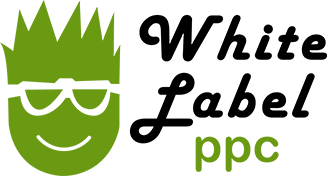Recently I read about a pretty savvy marketer. He had an idea for a new product and felt sure it would sell.
He spent thousands and thousands of dollars creating a sales letter, video sales letter, website, landing page, emails, and ads.
He hired the best copywriter he knew. He had designers involved in the project. And a whole lot more besides.
When he went to launch the product, he didn’t blow his whole ad budget at once, but he spent a healthy amount of money on his first campaign.
The results were dismal.
He only made back about a third of his ad spend.
So what went wrong?
Well, a number of things, most of which he could have determined would go wrong without having to spend so much money.
And that’s what I want to talk about today so you can avoid making the same mistakes.
5 Tips To Help You Avoid Wasting Time And Money On Marketing
(That will lead you to a well-converting marketing funnel creating
more leads and sales for your products and services.)
1) Observe your market. Don’t reinvent the wheel. Before you start investing in creating and testing a campaign, look at what is being done, what is working, and understand why. You might discover that something has already been tested.
For example, in one split test I read the company paid for and had tested both female and male voices to record their sales letter video for a weight loss product. The male voice converted better. However, later after asking around, they found out that male and female voices had already been tested in that market.
Don’t make the same mistake. Check in with marketers who work in your niche before you waste time and money on a test that has already been done.
2) Test small first. Keywords, target audiences, offers, headlines, subject lines, guarantees, and many individual pieces can impact your results tremendously.
One test I looked at showed that one email subject line converted significantly better than the other. The subject line that was converting well conveyed a different offer. The problem was the company had already invested in and created a sales letter, landing page, and video sales letter around the idea in the email subject line that was NOT converting.
For a small investment, they could have tested the subject lines and/or different offers through a simple, inexpensive PPC campaign. Instead, they ended up spending more money to revamp their sales letter, video sales letter, landing page, etc.
Another way to test is in smaller regions or in smaller numbers at first. For instance, currently I’m working on a campaign with a major franchisor. To help increase his brand awareness to get new foot traffic to their locations, we are creating a big YouTube video ad campaign.
Rather than creating the campaign and doing a big launch, we are testing small, using a handful of locations to see what works first. Once we know we have a campaign that is hitting the mark and is profitable, then we’ll scale it out.
3) Understand the metrics of your marketing funnel. If an ad campaign looks like it’s going to be a financial loser, it doesn’t make sense to automatically assume the product is bad or that the media doesn’t work. Examine the entire marketing funnel to determine where things are going wrong. There’s a good chance that only one or two elements need to be adjusted.
For example, if you are getting a lot of traffic to your landing page and your landing page is converting at 5.4% but your sales page is converting at 0.51%, then there is a problem with your sales letter or your offer. However, if you are getting a lot of traffic and your landing page is only converting at 0.72%, then in all likelihood your landing page needs some adjustment.
Look at the numbers at each individual component to see what is working and what isn’t rather than labelling the whole campaign a failure. Then spend time fixing the component to get your funnel working.
4) Focus on your top performing landing pages. Testing is important, but quantity doesn’t mean quality. Examine the results from your last ten landing pages. Find your top three performers from this list. Model your landing pages based on these and then create strategic, focused tests that can make a real difference.
5) Test smart. There are a lot of small changes that can increase your conversion rate. For instance, small tweaks such as the button color, font type, and spacing. However, I’ve found that the biggest increases come from testing bigger things such as offers, the flow, copy, upsells and downsells, and follow up sequences.
For instance, one test found that the landing page was putting barriers in the way by asking for too much information from visitors up front. To change the flow, the company let people download their software trial without providing any personal information first.
Then after users had a chance to download and use the software for 15 minutes or so, they were asked to register the software. By changing the flow and giving users a chance to experience the software first, users could see it was valuable and felt more comfortable giving personal information.
The company was so overwhelmed by the huge increase in response that they changed the flow again, only asking for registration after a week of use to get more qualified leads.
The deciphering of the treasure map is in creating a working funnel that converts BEFORE you go big. Because once you have something that’s proven to work well, you can buy as much traffic as you want and quickly scale your business up.

